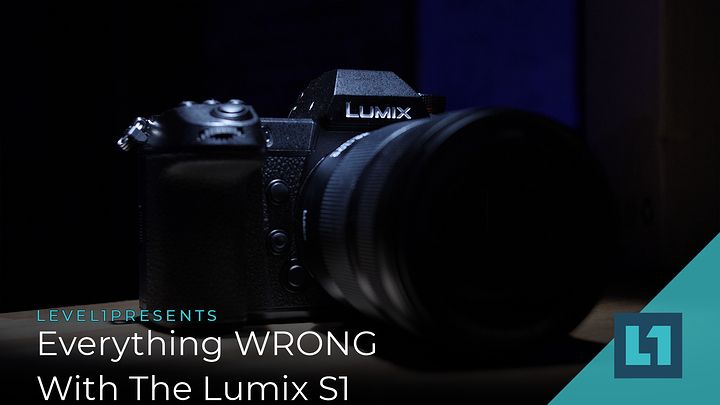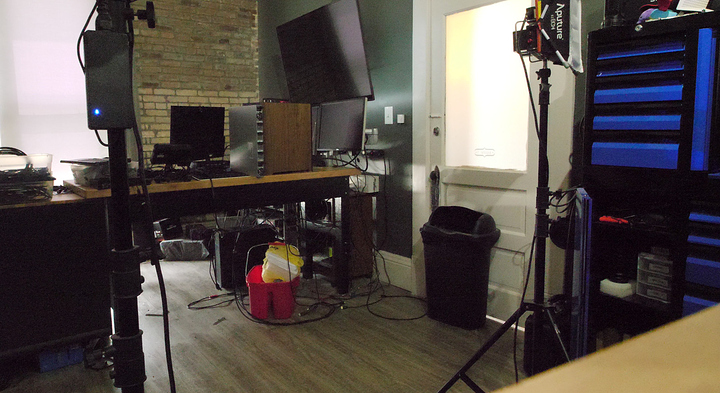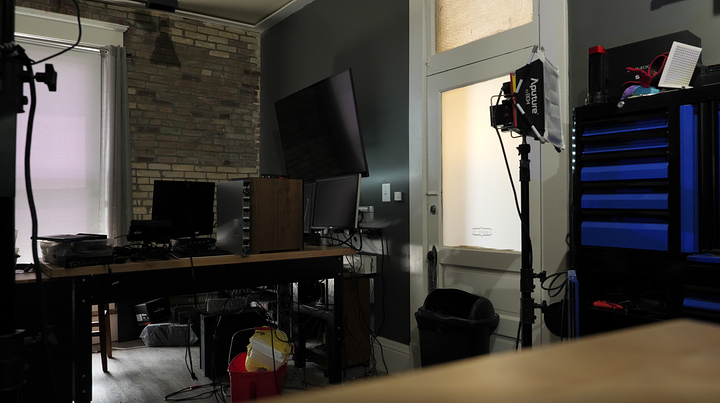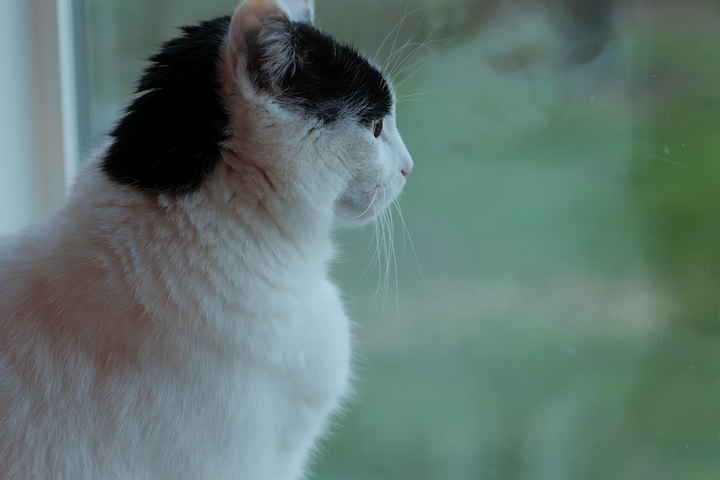The Panasonic Lumix S1 – Full-Frame game changer?
Firmware Bugs (… missing features?)
Coming from the GH5, which is an incredible m4/3 camera, I had certain expectations. There is no doubt that the Lumix S1 is a great stills camera, but the missing video features as compared with the GH5 make this an almost no-buy situation. To be clear, I don’t believe this camera would (or should) replace the GH5 for the reasons that people would buy a GH5, but being Panasonic I have very high expectations for their software because Panasonic consistently has extremely thorough and well-thought-out software that in no way limits the capabilities of your hardware.
Sure, Canon hardware is nice… but you need magic lantern 3rd party firmware to get the most out of it. The Sony A7III menu and customization options leave a lot to be desired.
The Lumix S1 hardware is monster hardware. It has the potential to be best in class for video, but that isn’t the case as of today with firmware 1.0.
We know that a V-Log update is coming in July – but I’m more worried about what I see as either bugs or mis-features in the S1 firmware. Panasonic has not clarified if these features will work more like I expect with the July firmware update and so that’s why (at least until they clarify) I would not recommend the S1 over the GH5/s for video (unless these caveats and limitations that are not clearly disclosed don’t bother you).
ISO Auto
Sometimes the LCD (top and back) will display what the current ISO is that has been picked for ‘Auto.’ Sometimes it simply says ‘Auto.’ It seems useful if it would display that all the time.
GH5 ISO 12800
Lumix S1 ISO 12800
Why isn’t 4k/60 Full Frame (e.g not APS-C) on the S1 working?
The biggest disappointment is the lack of any option to get 4k/60 out of the HDMI port.
A lot of the marketing material for the S1 says first 4k/60 full frame camera. True technically, but you can’t (yet?) have both at the same time.
I get recording is not yet possible – possibilities with HEVC are exciting – but meh.
The Verge and many other places reported:
The S1 is definitely more suited for videographers.
It records 4K with full-sensor readout and no crop
to speak of, and there’s no recording time limit for
4K at 30 or 24p. (4K at 60fps is time- limited on
both the S1 and S1R to 30 minutes on the former
and 15 with the latter.)
This is misleading or poorly worded. There is simply no way, with firmware 1.0, to get 4k/60 out of the camera without it being APS-C. It can record 4:2:0 8-bit and 4:2:0 10 bit HLG internally (and output 4:2:0 10 bit externally) but no Full-Frame 4k/60. Full-Frame 4k/30 is an option.
For the 30fps optioons, there is a menu setting for picking between Full Frame and APS-C. A few FHD modes support Pixel/Pixel which means direct pixel readout for a very small area.
However, in photo mode you can hold the button down to get full-frame 4k/60 for a few minutes. No audio. This is too much work and too silly to use, but I did experiment with this to see if the camera would overheat. It did warm slightly, but I think 4k/60 no-crop would be fine at least for HDMI output.
I can’t help but wonder if Panasonic is getting paranoid about eating into their other higher-end camera lines. I certainly hope not – EVA1 buyers have different goals than hybrid shooters.
If anything the S1 makes me appreciate how awesome the GH5 is.
There is a 30 minute record limit for FF 4k/30, but the camera was not excessively hot after doing over 2 hours of back-to-back-to-back test shots. Perhaps Panasonic will remove this limitation in the future. For video production, I doubt this is an issue though.
What about 10 bit shooting!?
Okay, so there is some good and bad here, but mostly good! Most people have gotten this wrong, too. If you want HLG 10 bit you can get it, today, on the 1.0 firmware. Out to the Atomos Ninja Inferno it is an incredible picture. Absolutely stunning. But this mode is hidden. You have to set the HEVC output option then you can pick the HEVC record mode for 24p or 30p.
There is no 4:2:2 10-bit as on the GH5, but that has been explicitly promised by Panasonic so I feel confident that the camera will be able to record and output (full-frame) at 1080p/FHD and 4k/30. (Again, 4k/60 remains a mystery. FF or APS-C? I could be happy with 4:2:0 HLG 4k/60 FF or 4:2:2 4k/30 FF as FF 4:2:2 HLG 4k/60 might be asking a bit much).
Anamorphic Shooting
The GH5 can shoot 5k in anamorphic mode. Holy crap! Can’t do that on the S1, which sucks. That might be asking a bit much?
High Speed Shooting
Like the GH5 this camera has options for shooting up to 180fps in FHD. Unlike the GH5 you have much less control over those high-speed modes. The biggest issue is that there doesn’t seem to be a way to set ISO or the F-Stop manually.
Tap the ISO button in high speed video? Nothing happens. But there is a work around! If you go to the Recorder Icon > Image Quality 1 > ISO Sensitivity (video) you can set the lower and upper limit to whatever ISO you want. This seems to be honored in high-speed shooting.
I didn’t find any clever hack for setting the Fstop.
Your only option for setting the exposure is to set the metering mode and then pick if you want it 0, 1/3 under exposed, 1/3 over exposed, etc with the +/- button and let the software do it. Annoying.
There is an option “Auto Exposure in P/A/S/M” which I have set to Off. This seems to be for the non-high-speed shooting mode as it has no effect in high speed shooting.
Unlike the GH5 where you can define the frame rate the S1 has only 120 and 180 FPS presets for FHD and 60fps (APS-C) for 4k.
You can shoot FHD 150fps (no crop), FHD 180fps (APS-C crop) or 4k 60fps (APS-C crop)
Interestingly the FHD mode is labeled crop but the 4k 60/30 mode is not labeled crop (even though it is, in fact, crop).
48/24 fps is also shot with the APS-C sensor crop.
Overall, these missing features or misfeatures are a big deal to me. Tis is a major complaint.
What about time lapse?
Literally every other camera manufacturer should look at how Panasonic does timelapse. They could learn a thing or two. Again, Panasonic’s computer scientists writing this firmware are very far ahead of Nikon, Sony and Canon (in that order – Canon has got to get their software game together. It’s especially a mess. Sony’s problem is that they’re too paranoid about cannibalizing their other products to let the A7III be as good as it could be.)
Accessories like the XLR-1 adapter are compatible, any problems?
Yes, sadly, there are problems. It works but I can’t find a way to change the recording modes from 16 bit/24khz to 24 bit and/or 96khz as I can on the GH5.
The only option seems to be on or off for the XLR adapter.
I’m forced to wonder what the conditions were that the hardware is so polished but the
I feel like there is a 95% chance this will be fixed in the next firmware update. I hope we don’t have to wait until July for that firmware update, though.
I got the free battery grip for pre-ordering (Never Preorder!). It’s solid. Battery life without the grip is good – subjectively its slightly worse than the GH5 for the way that I shoot – so having the battery grip as an option is appreciated.
software so… behind?
Can you unlock hidden options via menu settings file modifications?
Doesn’t seem like it. For many of these options that seem like they should be there, but aren’t, I attempted to modify the CAMSET01.dat file the “save menu settings” function generates. Panasonic seems to have this file pretty well locked down and I couldn’t get anything interesting to happen when feeding it configs like “Use 60 fps and full-frame (not APS-C).” At best the settings were ignored and at worst I got an error message saying “can’t load settings.” At least I tried meme here.
Are there any other killer features?
The EVF (Electronic View Finder) is unbelievable. It looks like a SLR, but better. The resolution is incredible and it is much easier to check focus than even the LCD.
The USBc port supports powering and charging the camera! So you no longer need an external power brick and can run the camera from a USBc battery bank. I was sad this wasn’t an option on the GH5. The included USBc power brick works fine for powering the camera, or charging the batery, or both.
Included in the box is a separate USBc charger (powered by the same USBc brick) which is much appreciated. A lot of other manufacturers would have, I think, not included it to improve margins since the camera can charge the battery.
How is full-frame shooting?
There is a reason that many shooters with our type of workload like the A7III. We almost bought the A7III over Panasonic because of low-light performance and incredible image quality. In comparison to other full-frame cameras from Nikon, Sony and Canon, the S1 is the most expensive.
The low-light performance is incredible. With the new Panasonic 50mm lens the camera can almost see in the dark and the noise is very low. Somewhere between 6400 and 12800 the CMOS sensor noise only just starts to become apparently.
12800 (and even a bit beyond) is entirely usable in my opinion. There are some minor temporal artifacts from in-camera denoising that become apparent at 1:1 (or closer) zoom and at around 6400 iso. However, dialing back the noise cancellation and doing it in Premiere instead removes those artifacts. So, depending on your preference to do it in Post or do it in-camera for faster editing, you’ve got options. Depending on your needs ISO16000 may even be usable, but I still have some test footage to review.
The full-frame stabilization is at least as good, if not better, than the GH5. This is an incredible feat of engineering that cannot be understated. My subjective impression of it is that it is significantly better than the IBIS on the Sony A7III.
What about this autofocus system?
The GH5 launched with an inadequate autofocus system (at least for the camera pricepoint). There was some kind of a bug because setting the 179 shutter angle really improved things quite a bit.
The problem with Panasonic’s autofocus system is that it’s different. Most other high-end cameras use phase-detect autofocus which most people equate to set-it-and-forget it. Panasonic’s system is Depth-from-Defocus – a contrast based system.
There are a lot of options for setting the autofocus to behave the way you want – sensitivity, speed, eye/face tracking (body tracking), animal recognition & tracking, single point, multi point, arbitrary image tracking, etc.
If you take the time to learn to use the autofocus system, it can be quite good.
One of the easiest things to test (and I am surprised Panasonic doesn’t seem to do this – if they did, autofocus would be better out of the box) is to stand in front of a high contrast background (like our brick wall) and turn on face tracking. As the algorithm constantly checks that it has the best possible focus, the background bokeh will pulsate a bit. This is both distracting and annoying.
The autofocus feels at least twice as fast as the GH5 on it’s maximum setting – probably owing to more CPU horsepower in the camera under the hood – but out of the box the S1 has the same type of problem. If the shot is not on a tripod, it is much harder to notice the background focus changing.
One new mode, the 1-point AF+ mode, is especially effective at guessing what should be in focus.
If you take a few hours and learn the modes, options and how the camera behaves you will not be disappointed. I don’t know that it is as good as a phase-detect system but there are features here that I do not see on phase-detect cameras. So perhaps it’s a bit of a tradeoff.
Many reviewers have let the GH5 autofocus experience color their experience with the S1 – if you get to try one please try to keep an open mind and remember that the autofocus system doesn’t work the same way as a phase-detect system and it can work exceedingly well in its own right. Certainly is is much improved even over FW2.3 on the GH5.
Other Software Thoughts
One thing that Panasonic added, a little thing, that is much more awesome than I expected is the # custom modes under C3. So on the GH5 you have C1, C2 and C3 which can be programmed with custom modes. C3 can have up to 3 sub-items under it. On the S1 you can add many more custom options, picked via LCD, under C3. This is awesome for quickly switching between different high-speed shooting modes (especially with the situation we’re in with gimped ISO controls for high-speed video). I really hope this feature makes its way over to the GH5.
In-body stabilization
For the weight and mass of a 35mm FF sensor… the IBIS is incredible. Handheld shots look amazing. There is also a “scope” you can enable to see how hard the IBIS is having to work to and from that scope I am learning to better steady the camera and get better shots. For example, shooting with a slider on carpet is much more unsteady than I would have supposed previously.
6k photo mode
Any final complaints?
I expect some people would not like the lack of the articulating screen but this isn’t really a big deal for me personally. The Panasonic Image app is good enough for remote shooting and focus peeking. The screen is much more solidly attached to the camera frame than the GH5.
What about Lenses?
The L-mount situation is kind of a disaster, I think. Currently, a lot of Lieca SL do not seem to work full-feature with the Panasonic. There is a $5k 24-90 L-mount lens that works well, I think, but I’m not too sure what the problem is.
The novoflex EF adapter that I tried seemed buggy. You can forget autofocus. Sometimes. Forget Sigma glass, or even older EF lenses from Canon (think 5d MkII era glass… maybe firmware updates are needed? But $650 is too much).
The Sigma MC-21 is on order. We will do a follow-up on the L mount situation when we get the adapter. Right now it seems like L mount alliance members need to do a better job communicating with each other and testing their lenses.
The new Sigma primes for L mount that are coming out very shortly look promising for new glass, though. The new Panasonic 24-70 looks like it will cost less than the $5k Leica 24-90, which is a bit high as far as lenses go.
Personally, I’m hoping for an affordable Kipon Medium Format speed booster because there is a lot of excellent medium format glass out there that is plenty good enough for our internet bozo selves.
We have a lot of Sigma glass already.
I’m also told there is a 24-70 L mount that’s coming (that will be more affordable than $5k).
The F4 24-105 is a surprisingly capable lens, though. The bokeh (especially at longer focal lengths) was pleasing and it has better edge aberration characteristics than the Sigma 14-24.
anyone have any questions/thoughts/stuff not covered in the review?




